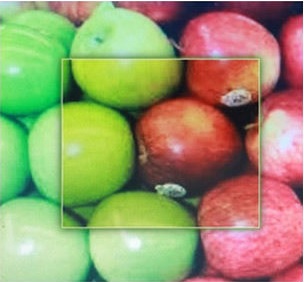Organic MolecuLED versus Inorganic Quantum Dots and Medical Applications
Curator: Danut Dragoi, PhD
Quantum Dots are good fluorescent markers for biological and biomedical applications, in particular in cellular imaging, see link in here . Moreover, they have attracted great interest for their potential application in electronic and optoelectronic devices see link in here. Strongly luminescent semiconductor nanocrystals are highly desirable for a large number of optoelectronic applications, such as light-emitting diodes (LEDs), see link in here.
A comparison of Inorganic and Organic Quantum Dot technologies is shown in here.
Quantum dots and related approaches for tailoring and improving the quality of light for specific applications provide a remarkable interest for the buck, which is why they are rapidly penetrating the display and lighting markets. QDs that can go into lighting feature built-in protective layers, so no external environmental seal is required. The material is handled in air like phosphors, and the material has ‘phosphor-like stability’. It is tailored for the heat and luminous flux of on-chip environments. According with Juanita Kurtin, founder and CTO of Pacific Light Technologies (PLT); a venture-funded company established in Portland in 2011 the new organic QD has the absorbance spectrum of PLT’s materials , that barely overlaps with QD emission spectra. This very low self-absorption “enable the high concentration required for on-chip applications and color combinations.” Also, the dot-on-chip approach provides a drop-in replacement for any white LED. It works for all sizes of display, and is the “only QD solution for lighting”, see link in here.
PLT’s dots are cadmium-based, as you would expect for an on-chip approach, but the company is investigating cadmium-free materials, see link in here .
PLT’s senior team comes from just the places you would like them to come from for this sort of development program, and it is intriguing that a start-up may be moving ahead faster on the on-chip materials problem than better-known companies that have been in the business longer. Still, it was not clear from the presentation, see link in here exactly what PLT has done to make their materials more stable.
In Display Daily, it is discussed StoreDot’s organic-film alternative to semiconductor quantum dots, see link in here, and in here. (StoreDot: An Organic Quantum Dot Alternative). Nanosys, see link in here, uses Inorganic (CdSe) NDs have the narrowest full of half maximum peaks at 29 nm width and highest lifetime of 50 k hours. Here we notice the crystallinity effect on QNDs lifetime, since organic materials have less crystalline perfection. However, the Cd and Se elements are a disadvantage in QNDs being toxic and not fully applicable in medicine.
In Table 1 it is shown that StoreDot is the only company using organic-film for making MolecuLED, a great alternative of OLED (organic LED) made at nanoscale using a technique that is kept confidential. However, assembling molecules in a similar way to the atoms arranged in a crystal suggests using the self-assembling molecules techniques. The information in the StoreDot’s website does not mention the excitation type of OQDs (Organic Quantum Dots), electrical in which the organic emitting diodes are controlled, or optical. For this reason MolecuLED(TM) organic technology by @StoreDot is making the Inorganic QDs such as Cadmium / Indium Quantum Dot industry very nervous, see link in here.
Picture below, taken from here, shows rich colors in MolecuLEDTM-embedded device (central frame) compared to standard device (LCD-liquid crystal display) (outer frame).
An excellent site on displays solutions can be reviewed in here.

Image SOURCE: http://www.store-dot.com/#!technology/c5ue
Table 1

Table 1 SOURCE: http://www.displaydaily.com/display-daily/35647-more-on-quantum-dots-and-qd-replacements-2
NB-It is possible that MolecuLED technology can replace the Inorganic QDs in a very short period of time. Besides LCD display applications, the MolecuLEDTM has a great potential in medicine replacing the photo-diode arrays in bio-analytical systems with much denser organic-photodiode-arrays that automatically increase the resolution and the performance of the measuring instrument.
SOURCES
Display solutions: http://www.displaydaily.com/display-daily/35647-more-on-quantum-dots-and-qd-replacements-2
Nanosystem Inc, Inorganic QD: http://www.nanosysinc.com/what-we-do/quantum-dots/
http://www.hindawi.com/journals/jnm/2014/397469/
http://www.pacificlighttech.com/quantum-dots-in-ssl/
StoreDot, Organic QD: https://www.linkedin.com/pulse/moleculedtm-organic-technology-storedot-making-indium-doron-myersdorf?trk=v-feed